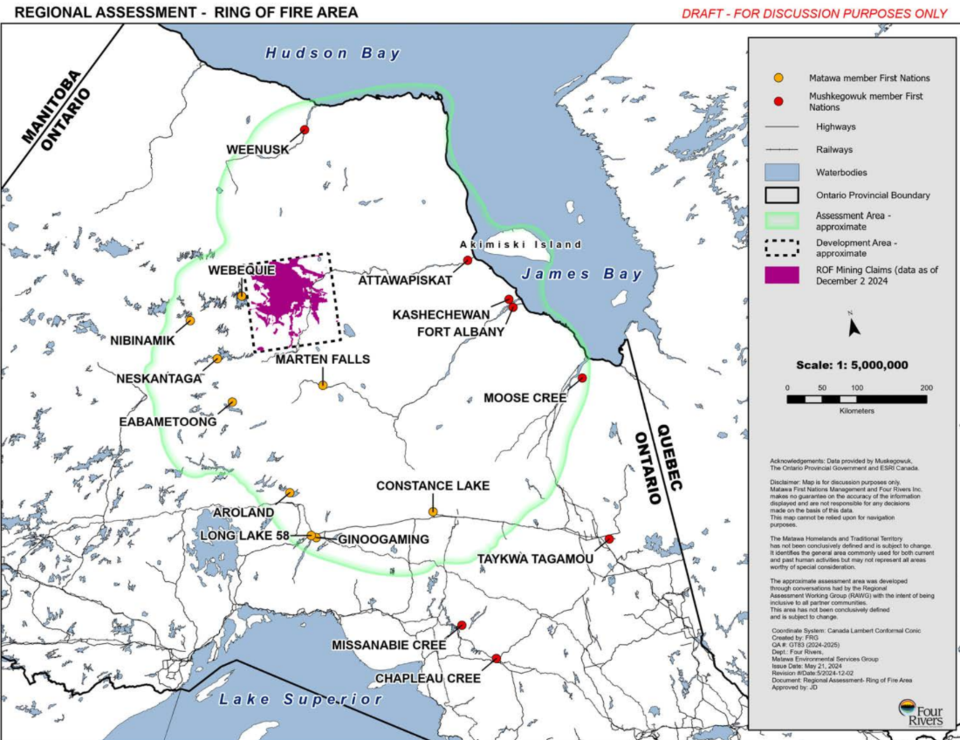Deep and Dry
Local legend has it that in the late 19th century, a relative of Queen Victoria visited the Town of Goderich, Ont., on the shores of Lake Huron, and returned to tell the British monarch what a beautiful place it was: to which she replied, “Surely it must be the prettiest town in Canada.”
The story may be more legend than fact but nevertheless, to this day, Goderich still calls itself “The Prettiest Town in Canada,” but it could, however, go one step further by also boasting that it is also the home to the largest salt mine in the world and no one would dispute that assertion either because it’s a fact.
The Sifto salt mine, owned and operated by Compass Minerals of Overland Park, Kansas, produces nine million tonnes annually. Ninety per cent of that output is scattered on road surfaces in Ontario, Quebec and a number of northern U.S. states every winter to keep them ice-free and safe for the driving public. The balance is used in water softening and as chemical feed stocks.
The mine, which opened in 1959, currently employs 550 people.
As the largest employer in town, it has a huge presence on the local economy but its also one of the more ‘invisible’ companies in the community because its main operations are located 1,800 feet underground, almost entirely beneath Lake Huron.
The company’s crews are now working just over three kilometres beyond the shoreline, according to Rowland Howe, Compass’ country executive for Canada.
The salt bed is about 100 feet thick and it is virtually impermeable. Therefore, says Howe, it is remarkably dry in the mine, despite having between 100 and 150 feet of water overhead.
For most of the life of the operation, the salt has been extracted using the drill and blast approach. Miners cut into the floor of the deposit, drill holes, insert dynamite and then detonate.
“It basically turns the whole thing into a quarrying operation,” says Howe, “We use front loaders and trucks to move the rock back to the crushers and screeners.”
However, the company is now converting to a continuous mining operation employing massive, tracked machines armed with a moveable cutterhead, which is essentially a rotating drum with protruding teeth that scrape and gouge the salt from the deposit.
Similar in nature to a potash-mining operation, the salt falls onto a tray at the front of the machine and a conveyor moves it to the rear and straight into awaiting trucks.
Howe says there are several advantages over the drill-and-blast approach, which requires periodical breaks while a fresh section of the deposit is cut, drilled and blasted. The equipment will allow non-stop extraction other than downtime for repairs and maintenance.
“You’re using one machine to do the work of four,” says Howe. “You’re eliminating the use of explosives so it is safer. The potash guys use the same machines, but they’re much larger and less manoeuverable. We use a model that cuts about 15 feet wide and 15 feet high. They’re monsters, really.”
A fleet of trucks are used to haul the rock to crushers and screeners that are located within the mine.
“Everything is crushed and screened to size underground and then hoisted to surface storage facilities for distribution to customers,” says Howe. “Salt is hydroscopic, meaning it absorbs atmospheric moisture so in humid weather, especially in the summer, crushing and screening would be more difficult if we were doing it on the surface. As well, because it’s very dry underground, it reduces the corrosion to the machinery.”
Road salt is crushed and screened to a diameter of about five-eighths of an inch and it is moved by ship to distribution centres from Montreal to Duluth, Minn. From there it is hauled by truck to storage facilities owned by municipalities and other customers.
Compass also operates a solution mine and evaporator plant that employ an additional 100 people. These operations produce Sifto table salt from the same mineral deposit, but both are located several kilometres inland and a good distance from the underground mine.
From the underground operation, Howe says, “We flood bore holes with water to dissolve the salt in a controlled manner to create a cavity in the deposit and there are techniques to control the shape and dimensions. The cavities can last a long time, several years.”
The salt-laden solution, known as brine, is drawn to the surface and processed in a closed-circuit evaporation plant. In essence, heat is applied to the solution and most of the water evaporates, but the steam is captured within the plant and allowed to condense and re-injected into the bore holes. Meantime, the slurry is dried and the salt crushed and screened to remove any impurities. It is then packaged and shipped to grocers and food processors across the country.
The Sifto underground mine and the nearby solution mine have provided several decades of stable employment in the small, pretty lakeside community of Goderich and there is no reason to expect that that will change in the foreseeable future.
Compass is working a vast deposit that is far from exhausted and there’s little reason to anticipate a drop in demand for salt, either for safe roads or human consumption.
Furthermore, the company has compiled an enviable safety record over the years at both the solution mine and the underground operation.
Howe points out that the company employs conservative practices beneath the surface. The salt bed is a stable, nearly horizontal formation and the company leaves the top 30 feet of the deposit intact. It forms a stable roof over the mined out chambers, but Howe says the company also bolts it as an added precaution. As well, the miner leaves massive pillars of salt in place to further reduce any possible risk of a collapse.
“We’re very proud of our safety record,” says Howe.





Comments